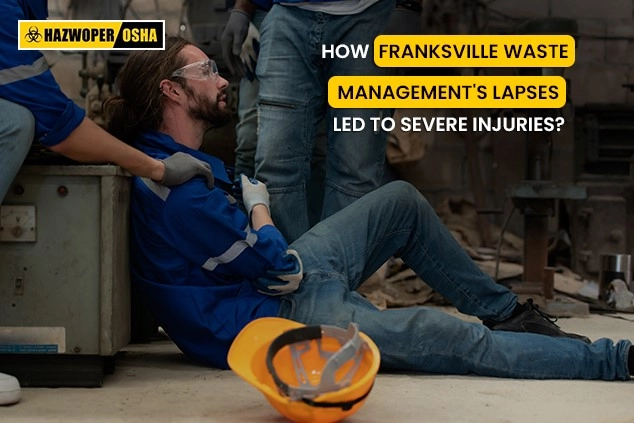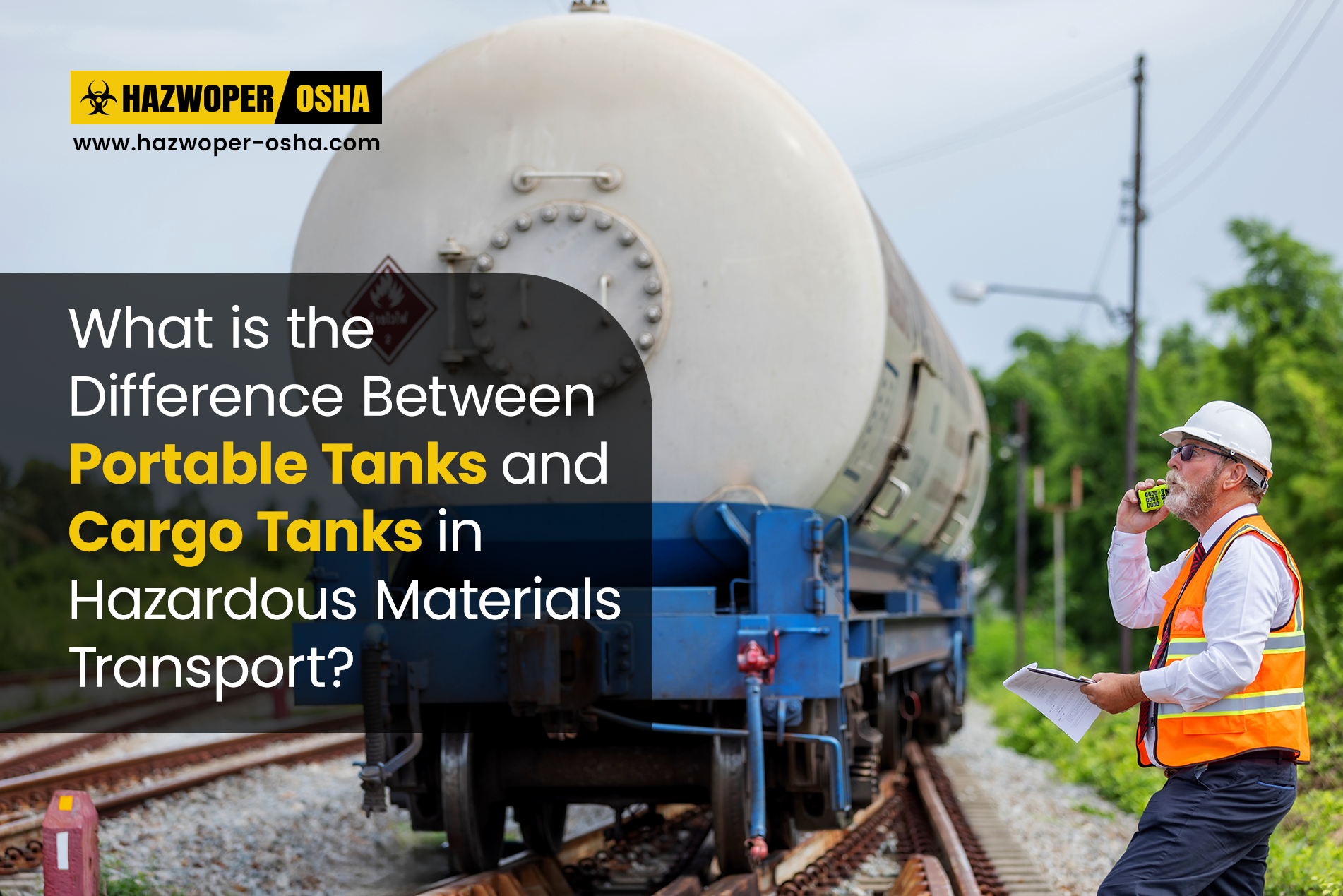How Franksville Waste Management's Lapses Led to Severe Injuries?

Introduction:
Improper and insufficient safety measures at the workplace have devastating consequences for employees, employers, and the public. A recent incident at Franksville's John's Disposal Service and John's Recycling is major evidence of it. A temporary maintenance worker from this company suffered serious injuries as he got into an engine while servicing the vehicle. This event occurred as the companies did not have energy control procedures and other safety measures in place, regarding fall protection, hazard communications, and forklift operations. This article will shed light on the incident and understand the implications of not adhering to safety measures at the workplace.
Gain Insight into Franksville Worker's Incident
In January 2024, a temporary maintenance worker at John's Recycling Inc. And John's Disposal Services Inc. got severely injured as his jacket sleeve got entangled in the engine while servicing a vehicle. The U.S. Department of Labor's Occupational Safety and Health Administration's inspectors arrived at the scene of the incident after the employer had reported the workplace injury. The inspector's investigation has found that employers had not ensured the proper use of energy control procedures before the worker started servicing the vehicle.
Dustin Schnipke, the OSHA Area Director, stated that
A worker got severely injured as their employer didn't implement an effective health and safety program and protected the workers performing the vehicle repairs by developing specific energy control procedures. It is the employers' responsibility to train the workers and take all the necessary precautions to keep them safe from unknown hazards.
OSHA's Response to the Incident
The failure to implement the required essential energy control procedures by the employers is a significant lapse in the safety protocols that acted as a direct contributor to this incident. An investigation by OSHA cited 13 violations at the Franksville facility. These violations include two serious citations for the lack of energy control procedures to prevent the accidental release of hazardous energy. In addition, in the previous inspection in 2023, the companies were also cited for repeated violations. These included:
- Inadequate training of forklift operators.
- Lack of training regarding hazardous communication among the employees.
- Non-provision of Fall protection training to employees working on elevated platforms
The company also didn't have a hearing conservation program in place. Not only this, but no machine guards were installed to protect the employees from moving parts, including motor shafts, conveyors, and grinders.
All these findings led OSHA to propose a total of $367,401 in penalties. This fine is due to five repeated violations, five serious violations, and three other-than-serious violations. The companies were given 15 business days from receiving citations to either comply with the penalties or request an informal conference with the area director of OSHA. The companies can also contest these findings before the Occupational Safety and Health Review Commision.
This response highlights OSHA's commitment to enforcing workplace safety standards. By adhering to these standards, any workplace can keep its employees and the general public safe and avoid hefty fines.
Why Are Safety Measures at the Workplace a Must?
The essential components of workplace safety regulations cover hazard identification and assessment, safety policies and procedures, training and education, emergency preparedness, use of PPE, incident reporting, and workplace environment controls. Without proper training in these areas and safety protocols, the employees can become a target of potential hazards and become non-compliant with OSHA and other workplace safety regulatory authorities. Below is a detailed description of each of these procedures, their importance, and how non-compliance can lead to tons of damage:
Energy Control Procedures to Protect the Workers Servicing the Vehicles
Lockout/Tagout (LOTO) procedures, also named energy control procedures, are designed to keep the workers protected from the unexpected release of hazardous energy during the maintenance and servicing of equipment and machinery. LOTO makes it mandatory to isolate the energy sources and render them inoperative before doing any servicing work. This includes shutting down the machines, locking the energy-isolating devices, and tagging them to stop accidental re-energization.
An energy control program covers the following aspects:
- Established procedures for locks and tags usage.
- The locks and tags themselves.
- Lockout/Tagout procedures.
- Lockout/Tagout policies and equipment.
- Annual review and inspections of the systems.
OSHA's Lockout/Tagout standards require employers to give each worker training so that they know, understand, and can follow the relevant protocols to deal with hazardous energy while maintaining & servicing heavy machinery. LOTO procedures are enormously essential to prevent fatalities and injuries caused by the unintentional start-up of the machine. OSHA also states that improperly implementing energy control procedures is one of the most frequently cited violations. HAZWOPER OSHA Training LLC provides OSHA Lockout Tagout (LOTO) Training, which is designed for craft workers, machine operators, electricians, and laborers to prevent accidents related to hazardous energy. This course is available online for self-paced training, via Instructor-led, and in SCORM formats to meet the needs of diverse employees and companies, so enroll today.
In the Franksville waste management incident, the employer did not ensure the proper use of energy control procedures for the machines, which is why the maintenance worker got injured. This could have been easily avoided by practicing and applying the lockout/tagout procedures for the relevant machines and providing the workers with the relevant training.
Fall Protection for Workers Working at Heights
Fall protection covers the practices and systems designed to stop falls in the workplace, especially in maintenance and construction environments where there is an inherent risk of falling from height. Fall protection practices include using guardrails, safety nets, and personal fall arrest systems. When employees are working at the height of six feet or more in the construction domain and four feet in general industrial settings, it is mandated by OSHA for employers to provide appropriate fall protection training and equipment.
Fall protection easily saves lives and prevents injuries in workplace settings, as falls are one of the leading causes of workplace fatalities. In this incident, the investigation found that the employees did not have appropriate fall protection training for working at elevated platforms. As one misstep and slip can take a life in seconds, neglecting fall protection is the biggest blunder any company can make. Proper fall protection training not only keeps the employee's lives safe but also saves the companies from hefty fines and penalties. To get certified in fall protection, enroll yourself in our OSHA Competent Person for Fall Protection Training course.
Forklift Safety Training for Employees
Forklifts are significant industrial-powered trucks that should only be operated by qualified and competent operators. The operators of forklifts must be evaluated on their skills to operate the truck safely before they are allowed to use them in the workplace. The forklift training is a combination of both theoretical knowledge and practical skills that covers topics such as load handling, safe operating procedures, and hazard awareness. Proper forklift operations training can save employees from accidents that cause serious injuries and fatalities.
In 2023, Wisconsin based John’s Disposal Service Inc. and John’s Recycling Inc. company was cited with serious violations of not providing their employees with proper forklift operation training. During follow-up investigation by OSHA in January, both companies were non-compliant with the safety regulations regarding forklift operations, which led to legal penalties and damaged reputations.
Employees without proper forklift operation training are at a higher risk of accidents, injuries, and fatalities. Now strengthen your workplace today while using Forklifts by enrolling in our OSHA Forklift Safety Training, available in flexible learning formats all over the USA.
Hazard Communication Training for Employees
Hazard communication training educates the employees about the chemical hazards in the workplace, their dangers, spills, and emergency response. The hazard communication training covers the safety data sheets (SDS), use of appropriate PPE, and proper labeling of hazardous materials. OSHA's Hazard Communication Standard (HCS) mandates the employers to provide hazard communication training to their employees so that they are aware of the hazardous chemicals' risks associated and how to protect themselves from them.
Another critical oversight found that was contributing to the unsafe working conditions was the lack of hazard communication training at John's Recycling Inc. and John's Disposal Services Inc. Employees did not have proper training about the chemical hazards, emergency response protocols, and proper usage of safety data sheets (SDS) that help understand the risks regarding the hazardous chemicals. We are offering Hazard Communication (HazCom) with the Globally Harmonized System (GHS) Training to educate employees about dealing with hazardous chemicals at the workplace.
Conclusion:
Following the consequences of the Franksville incident, it is evident that adhering to workplace safety measures is a legal and moral obligation. The heavy penalties imposed on John's Recycling and John's Disposal Services act as a serious reminder of neglecting these responsibilities. Implementing and educating about energy control procedures, fall protection, forklift operation training, and hazard communication. Investment in workplace safety is equal to investing in the employee's well-being and the long-term success of the business.
References:
Vector Solutions, 19 January 2024, The 6 Steps of Lockout/Tagout (LOTO) Safety Procedures, https://www.vectorsolutions.com/resources/blogs/loto-safety-6-steps-of-lockout-tagout/
Occupational Safety and Health Administration, July 18 2024, Federal investigators find Franksville waste management company's inadequate safety measures led worker to suffer severe injuries, https://www.osha.gov/news/newsreleases/region5/07182024

 EN |
EN |  ES
ES
































































































































